-
 Bitcoin
Bitcoin $87,985.5737
0.72% -
 Ethereum
Ethereum $1,574.8026
-3.90% -
 Tether USDt
Tether USDt $0.9999
0.00% -
 XRP
XRP $2.0783
-1.83% -
 BNB
BNB $600.4630
-0.57% -
 Solana
Solana $138.7268
-1.43% -
 USDC
USDC $1.0000
0.00% -
 Dogecoin
Dogecoin $0.1604
-0.49% -
 TRON
TRON $0.2468
0.93% -
 Cardano
Cardano $0.6232
-2.68% -
 Chainlink
Chainlink $13.0447
-3.65% -
 UNUS SED LEO
UNUS SED LEO $9.1903
-2.36% -
 Avalanche
Avalanche $19.7884
-0.95% -
 Stellar
Stellar $0.2455
-2.64% -
 Toncoin
Toncoin $2.9136
-3.77% -
 Shiba Inu
Shiba Inu $0.0...01234
-3.12% -
 Sui
Sui $2.2351
0.79% -
 Hedera
Hedera $0.1701
-0.34% -
 Bitcoin Cash
Bitcoin Cash $343.8870
1.52% -
 Hyperliquid
Hyperliquid $18.4355
1.81% -
 Litecoin
Litecoin $78.5146
-0.23% -
 Polkadot
Polkadot $3.7235
-4.61% -
 Dai
Dai $1.0000
0.00% -
 Bitget Token
Bitget Token $4.4307
-2.55% -
 Ethena USDe
Ethena USDe $0.9992
-0.01% -
 Pi
Pi $0.6322
-0.72% -
 Monero
Monero $215.4354
-0.09% -
 Pepe
Pepe $0.0...07934
0.95% -
 Uniswap
Uniswap $5.2398
-3.49% -
 OKB
OKB $50.8827
-0.49%
What impact does Bitcoin ETF have on environmental protection?
A Bitcoin ETF's environmental impact is indirect, potentially increasing Bitcoin mining's energy use if demand rises and fossil fuel reliance persists, but it could also spur the adoption of renewable energy to improve miners' ESG profiles and profitability.
Mar 04, 2025 at 11:54 pm
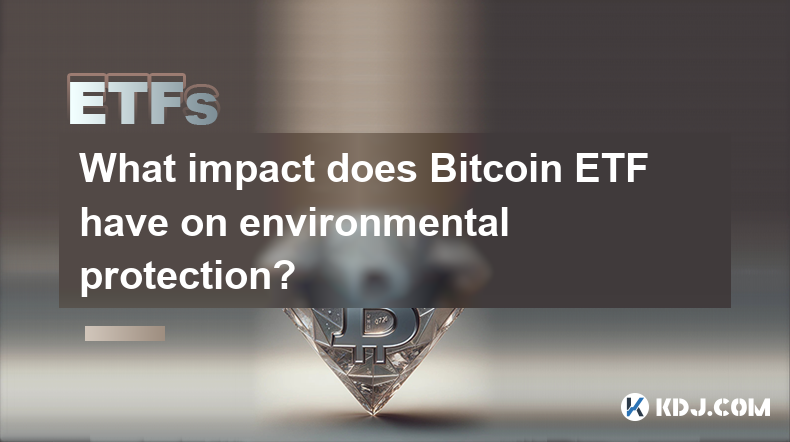
What Impact Does a Bitcoin ETF Have on Environmental Protection?
Key Points:
- The environmental impact of a Bitcoin ETF is indirectly linked to Bitcoin mining's energy consumption. A Bitcoin ETF itself doesn't directly consume energy, but its success could significantly increase Bitcoin's price and, consequently, mining activity.
- Increased Bitcoin mining activity, driven by higher demand from ETF investors, could lead to a rise in energy consumption, particularly if the majority of mining continues to rely on fossil fuels.
- Conversely, a Bitcoin ETF could accelerate the adoption of cleaner energy sources in Bitcoin mining, as miners seek to reduce their operational costs and improve their environmental, social, and governance (ESG) profiles to attract investment.
- The overall environmental impact will depend on several factors, including the rate of ETF adoption, the growth of renewable energy in the Bitcoin mining sector, and the regulatory environment surrounding Bitcoin mining.
- Regulatory pressure and investor demand for sustainable practices could push the industry towards greater energy efficiency and renewable energy adoption.
Unordered List of Detailed Steps Examining the Impact:
- Understanding Bitcoin Mining's Energy Consumption: Bitcoin mining is a computationally intensive process that requires significant energy to secure the network and validate transactions. This energy consumption is the primary source of concern regarding Bitcoin's environmental footprint. The process involves solving complex cryptographic puzzles using powerful computers. The energy used is a function of the hash rate (the computational power dedicated to mining) and the efficiency of the mining hardware. Currently, a significant portion of Bitcoin mining relies on fossil fuels, particularly in regions with abundant and cheap coal or natural gas. This reliance contributes to greenhouse gas emissions and exacerbates climate change. However, the proportion of renewable energy used in Bitcoin mining is steadily increasing, with some estimates suggesting a significant portion of mining now utilizes hydropower, solar, and wind power. The geographical distribution of mining operations also plays a role, with some regions having a higher reliance on renewable energy sources than others. Understanding this complex interplay of factors is crucial for assessing the potential environmental impact of a Bitcoin ETF. Furthermore, the efficiency of mining hardware is constantly improving, leading to a reduction in energy consumption per Bitcoin mined. This technological advancement is a crucial factor to consider when evaluating the long-term environmental implications of increased Bitcoin mining activity spurred by a successful Bitcoin ETF. The overall energy consumption is a dynamic variable influenced by several factors including the Bitcoin price, the difficulty of mining, the efficiency of mining hardware and the energy mix used in mining operations.
- The Impact of Increased Demand from a Bitcoin ETF: A successful Bitcoin ETF is likely to significantly increase the demand for Bitcoin. This increased demand will, in turn, drive up the price of Bitcoin, making Bitcoin mining more profitable. Higher profitability incentivizes more miners to enter the market, leading to a potentially significant increase in the overall hash rate and, consequently, energy consumption. This increase could negate any positive environmental impact from increased adoption of renewable energy within the existing mining infrastructure. The magnitude of this impact depends on several factors, including the size and scope of the ETF, the overall growth of the cryptocurrency market, and the regulatory environment surrounding Bitcoin. A large and successful ETF could trigger a substantial surge in mining activity, potentially outweighing any gains made in energy efficiency. Conversely, a smaller or less successful ETF might have a minimal impact on overall energy consumption. The potential for increased energy consumption is a significant concern for environmental advocates, who argue that a surge in Bitcoin mining activity could offset any positive environmental gains from other sectors.
- The Potential for Accelerated Renewable Energy Adoption: Paradoxically, a Bitcoin ETF could also act as a catalyst for the adoption of renewable energy sources in Bitcoin mining. As the price of Bitcoin increases, so does the profitability of mining. This increased profitability allows miners to invest in more sustainable and efficient mining operations. Miners are increasingly aware of the environmental concerns surrounding Bitcoin mining and are actively seeking ways to reduce their carbon footprint. This is driven partly by investor pressure and partly by a desire to improve their ESG profiles, making their operations more attractive to investors, including those invested in the ETF. The cost of renewable energy is continuously decreasing, making it a more economically viable option for miners. Moreover, regulatory pressure and government incentives are pushing the industry toward cleaner energy sources. A successful Bitcoin ETF could accelerate this trend, as miners strive to maintain profitability while minimizing their environmental impact. The shift toward renewable energy in Bitcoin mining is not uniform across all regions and miners, but it represents a significant long-term trend that could mitigate the environmental concerns associated with increased Bitcoin mining activity.
- Regulatory Landscape and its Influence: The regulatory environment surrounding Bitcoin mining plays a crucial role in determining its environmental impact. Governments worldwide are increasingly scrutinizing the environmental footprint of Bitcoin mining and are implementing regulations to encourage the adoption of renewable energy sources. These regulations can include carbon taxes, subsidies for renewable energy, and restrictions on the use of fossil fuels in Bitcoin mining. A supportive regulatory environment can significantly accelerate the transition to renewable energy in the Bitcoin mining industry. Conversely, a lack of regulation or unfavorable regulations could hinder this transition and lead to a greater reliance on fossil fuels. The regulatory landscape is constantly evolving, and its influence on the environmental impact of Bitcoin mining will likely continue to be significant, especially in the context of a Bitcoin ETF, where regulatory scrutiny is likely to be intensified. The regulatory response to a Bitcoin ETF will have profound implications for the long-term sustainability of the Bitcoin mining industry and its environmental footprint. A proactive and well-designed regulatory framework is crucial for guiding the industry towards a more environmentally responsible future.
- The Role of Technological Advancements: Technological advancements are playing a critical role in improving the energy efficiency of Bitcoin mining. The development of more efficient mining hardware, such as ASICs (Application-Specific Integrated Circuits), is continuously reducing the energy consumption per Bitcoin mined. Furthermore, advancements in software and algorithms are optimizing mining processes, leading to further energy savings. These technological advancements are crucial for mitigating the environmental impact of increased Bitcoin mining activity, driven by the success of a Bitcoin ETF. As technology continues to evolve, the energy consumption per Bitcoin mined is likely to decrease, reducing the overall environmental footprint of the Bitcoin network. However, the rate of technological advancement needs to outpace the growth in mining activity driven by a Bitcoin ETF to ensure a net positive environmental impact. The continuous innovation in this space is a critical factor in addressing the environmental concerns associated with Bitcoin mining and its future trajectory.
FAQs:
Q: Will a Bitcoin ETF necessarily increase Bitcoin mining's environmental impact?
A: Not necessarily. While a Bitcoin ETF could lead to increased demand and thus mining activity, it could also incentivize miners to adopt more sustainable practices to attract investors concerned about ESG factors. The net effect depends on the interplay of increased demand, technological advancements, and regulatory pressure.
Q: Are there any efforts to make Bitcoin mining more environmentally friendly?
A: Yes, many miners are actively transitioning to renewable energy sources and investing in more energy-efficient hardware. Furthermore, initiatives are underway to improve the transparency and traceability of the energy sources used in Bitcoin mining.
Q: What role does regulation play in mitigating the environmental impact of Bitcoin mining?
A: Regulation can significantly influence the environmental impact. Governments can incentivize renewable energy adoption through subsidies and tax breaks, and disincentivize fossil fuel use through carbon taxes and restrictions. A supportive regulatory environment is crucial for promoting sustainable Bitcoin mining practices.
Q: How can investors contribute to a more environmentally friendly Bitcoin ecosystem?
A: Investors can support companies and miners committed to using renewable energy and improving their ESG profiles. They can also advocate for stronger regulations that promote sustainable practices within the Bitcoin mining industry. Investing in Bitcoin ETFs that prioritize sustainability would also be a positive contribution.
Q: What are the long-term prospects for the environmental sustainability of Bitcoin mining?
A: The long-term outlook depends on several factors, including technological advancements, regulatory pressure, and the overall growth of the cryptocurrency market. If technological advancements and regulatory frameworks keep pace with increased demand, the environmental impact can be mitigated significantly. However, a lack of progress in these areas could lead to a significant increase in the environmental footprint of Bitcoin mining.
Disclaimer:info@kdj.com
The information provided is not trading advice. kdj.com does not assume any responsibility for any investments made based on the information provided in this article. Cryptocurrencies are highly volatile and it is highly recommended that you invest with caution after thorough research!
If you believe that the content used on this website infringes your copyright, please contact us immediately (info@kdj.com) and we will delete it promptly.
- Coinbase Listing Sparks Speculation Tied to Trump’s SEC Pick
- 2025-04-22 12:40:11
- Hyperlane testnet successfully launched on Binance Wallet & Binance HODLer App.
- 2025-04-22 12:40:11
- The Bitcoin price rise to $87,000 created contrasting profitability outcomes between investors in the market.
- 2025-04-22 12:35:12
- Base chain daily coin issuance exceeds Solana
- 2025-04-22 12:35:12
- From Sony's new web3 project to new updates from Bybit, here's a roundup of the top crypto stories you may have missed.
- 2025-04-22 12:30:11
- Decentraland [MANA] Breaks Key Overhead Resistance, Surges by 8% Within a Day
- 2025-04-22 12:30:11
Related knowledge

What is the difference in returns between long-term holding of a Bitcoin ETF and holding Bitcoin directly?
Apr 09,2025 at 04:15am
When considering the difference in returns between long-term holding of a Bitcoin ETF and holding Bitcoin directly, it's essential to understand the nuances and factors that affect each investment option. Both approaches have their unique advantages and potential drawbacks, which can significantly impact the overall returns over time. Understanding Bitc...
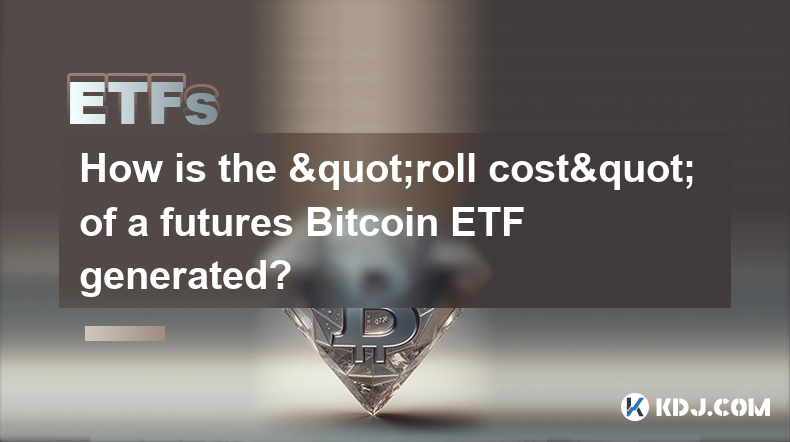
How is the "roll cost" of a futures Bitcoin ETF generated?
Apr 08,2025 at 01:22pm
The 'roll cost' of a futures Bitcoin ETF is a critical concept for investors to understand, as it directly impacts the performance of the ETF. In this article, we will delve into the mechanics of how the roll cost is generated, exploring the underlying processes and factors that contribute to this cost. Understanding Futures ContractsFutures contracts a...
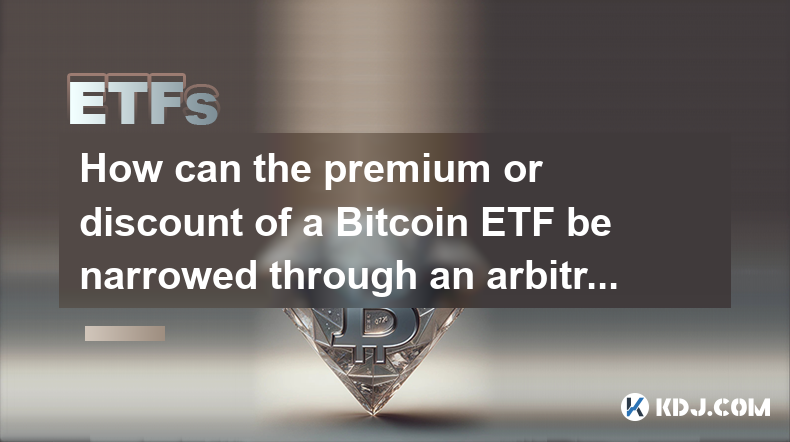
How can the premium or discount of a Bitcoin ETF be narrowed through an arbitrage mechanism?
Apr 09,2025 at 12:07am
Arbitrage mechanisms play a crucial role in narrowing the premium or discount of a Bitcoin Exchange Traded Fund (ETF). Understanding how these mechanisms work can provide valuable insights into the dynamics of Bitcoin ETFs and their relationship with the underlying asset. This article will delve into the specifics of how arbitrage can be used to align t...
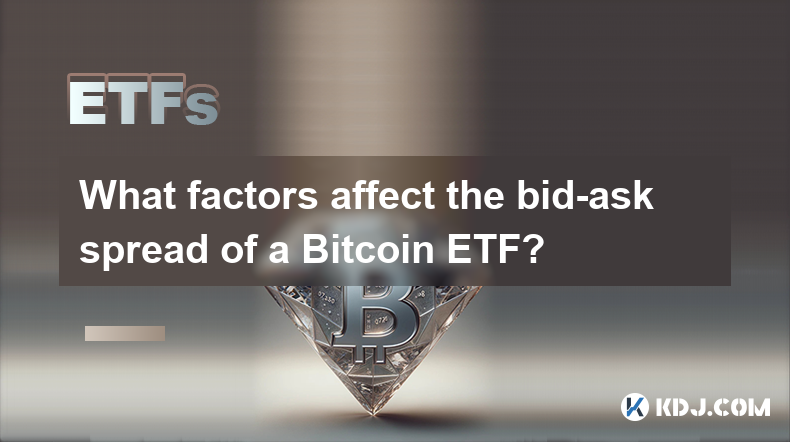
What factors affect the bid-ask spread of a Bitcoin ETF?
Apr 08,2025 at 08:50pm
The bid-ask spread of a Bitcoin Exchange Traded Fund (ETF) is a critical metric that investors and traders closely monitor. It represents the difference between the highest price a buyer is willing to pay (bid) and the lowest price a seller is willing to accept (ask). Several factors influence this spread, and understanding them can help investors make ...
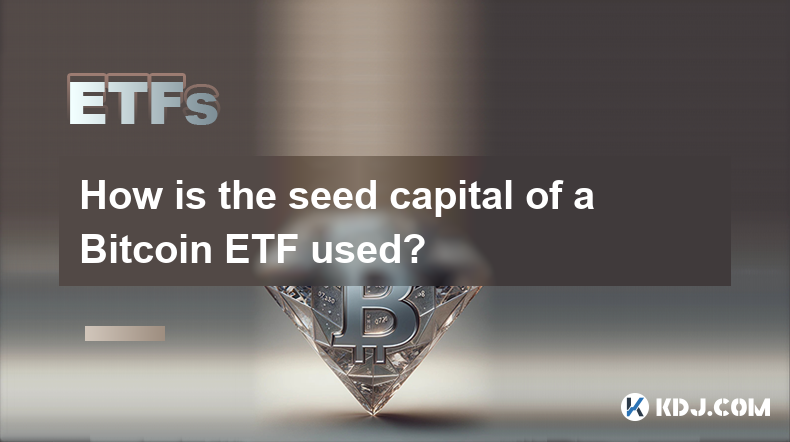
How is the seed capital of a Bitcoin ETF used?
Apr 10,2025 at 02:15pm
The seed capital of a Bitcoin ETF plays a crucial role in the establishment and operation of the fund. This initial investment is used to create the fund's underlying assets, manage operational costs, and ensure the ETF can start trading on an exchange. Understanding how this seed capital is utilized provides insight into the mechanics of Bitcoin ETFs a...

What is the difference between "physically backed" and "synthetic" Bitcoin ETFs in terms of holding assets?
Apr 10,2025 at 04:56pm
Bitcoin Exchange Traded Funds (ETFs) have become a popular way for investors to gain exposure to the cryptocurrency market without directly owning the underlying asset. There are two primary types of Bitcoin ETFs: physically backed and synthetic. Understanding the differences between these two types, particularly in terms of how they hold assets, is cru...

What is the difference in returns between long-term holding of a Bitcoin ETF and holding Bitcoin directly?
Apr 09,2025 at 04:15am
When considering the difference in returns between long-term holding of a Bitcoin ETF and holding Bitcoin directly, it's essential to understand the nuances and factors that affect each investment option. Both approaches have their unique advantages and potential drawbacks, which can significantly impact the overall returns over time. Understanding Bitc...

How is the "roll cost" of a futures Bitcoin ETF generated?
Apr 08,2025 at 01:22pm
The 'roll cost' of a futures Bitcoin ETF is a critical concept for investors to understand, as it directly impacts the performance of the ETF. In this article, we will delve into the mechanics of how the roll cost is generated, exploring the underlying processes and factors that contribute to this cost. Understanding Futures ContractsFutures contracts a...

How can the premium or discount of a Bitcoin ETF be narrowed through an arbitrage mechanism?
Apr 09,2025 at 12:07am
Arbitrage mechanisms play a crucial role in narrowing the premium or discount of a Bitcoin Exchange Traded Fund (ETF). Understanding how these mechanisms work can provide valuable insights into the dynamics of Bitcoin ETFs and their relationship with the underlying asset. This article will delve into the specifics of how arbitrage can be used to align t...

What factors affect the bid-ask spread of a Bitcoin ETF?
Apr 08,2025 at 08:50pm
The bid-ask spread of a Bitcoin Exchange Traded Fund (ETF) is a critical metric that investors and traders closely monitor. It represents the difference between the highest price a buyer is willing to pay (bid) and the lowest price a seller is willing to accept (ask). Several factors influence this spread, and understanding them can help investors make ...

How is the seed capital of a Bitcoin ETF used?
Apr 10,2025 at 02:15pm
The seed capital of a Bitcoin ETF plays a crucial role in the establishment and operation of the fund. This initial investment is used to create the fund's underlying assets, manage operational costs, and ensure the ETF can start trading on an exchange. Understanding how this seed capital is utilized provides insight into the mechanics of Bitcoin ETFs a...

What is the difference between "physically backed" and "synthetic" Bitcoin ETFs in terms of holding assets?
Apr 10,2025 at 04:56pm
Bitcoin Exchange Traded Funds (ETFs) have become a popular way for investors to gain exposure to the cryptocurrency market without directly owning the underlying asset. There are two primary types of Bitcoin ETFs: physically backed and synthetic. Understanding the differences between these two types, particularly in terms of how they hold assets, is cru...
See all articles























































































